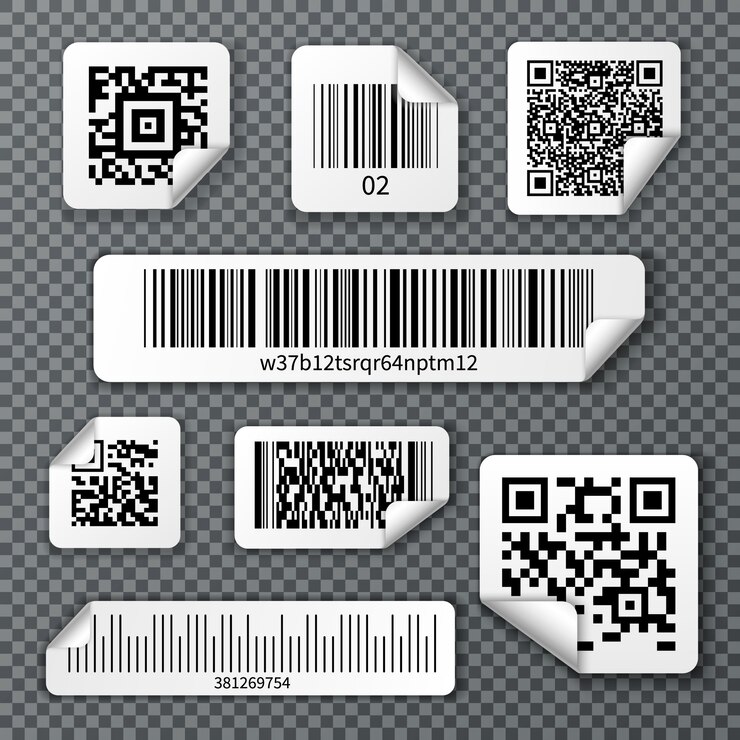Is IEC required for export of services after GST?
- 9 Aug 24
- 17 mins

Is IEC required for export of services after GST?
Key Takeaways
- The IEC License is essential for Indian businesses to legally engage in export trade and is issued by the DGFT.
- Possessing an IEC facilitates market expansion, legal compliance, and eligibility for government benefit schemes.
- Specified services, including IT and professional services, can be exported without GST, provided they meet certain criteria.
- Post-GST, the IEC and GSTIN have been integrated, simplifying the compliance process for businesses.
- IGST paid on imports can be claimed as input tax credit, aiding in cash flow and reducing the cost of goods sold.
Understanding IEC Code in GST
What is an IEC Code License?
The Import Export Code (IEC) License is a key business identification number that is mandatory for Indian companies to engage in the import and export of goods and services. This ten-digit code for Export is issued by the Directorate General of Foreign Trade (DGFT), Ministry of Commerce and Industries, Government of India.
The IEC is a pre - requisite for companies to legally transport their products across international borders and is tied to the PAN (Permanent Account Number) of the business or individual in the case of sole proprietorships.
The Significance of IEC for Businesses in India
The IEC holds paramount importance for businesses in India for several reasons:
- Legal Compliance: It ensures that a business is compliant with the laws governing international trade in India. Without an IEC, businesses cannot legally import or export goods and services.
- Market Expansion: Possessing an IEC enables businesses to explore and expand into international markets, thereby opening up avenues for growth and increased revenue.
- Benefit Schemes: The Government of India, through the DGFT, offers several schemes to exporters. Businesses with an IEC can avail of these benefits, which may include subsidies and duty refund schemes.
- Ease of Transactions: Having an IEC simplifies various sort of process involved in international trade, such as customs clearance and bank transactions related to foreign exchange.
- No Expiry: The IEC does not have an expiration date, meaning once obtained, it serves the business indefinitely unless revoked or surrendered. This permanence adds to the convenience for businesses, eliminating the need for renewals.
- Enhanced Trust: For foreign partners and potential clients, an IEC serves as a trust factor, indicating that the business is recognized by the Government of India and adheres to the standards required for international trade.
Defining Service Exports

Service exports refer to the supply of services from a resident of one country to a resident of another country. These services can encompass a wide range of sectors including information technology (IT) and IT-enabled services (ITES), professional services (like legal, accounting, and architectural services), tourism and travel, transportation, and education, among others.
Unlike goods, services are intangible and do not result in the ownership of anything. Their consumption can occur remotely or may require the provider or the consumer to travel. The key aspect of service exports is that they generate foreign exchange earnings for the country where the service provider is based.
Clarifying "Specified Services"
Explanation of what constitutes "Specified Services" under IEC and GST
Under the framework of the Indian Goods and Services Tax (GST) and the Import Export Code (IEC) regulations, "Specified Services" refers to particular categories of services that are eligible for export without the payment of GST, provided they meet certain conditions as defined by the GST law and foreign trade policy.
These services are specified to streamline the export process and to encourage the export of services from India, contributing to the country's foreign exchange earnings.
Specified Services under the GST regime are identified based on their ability to be delivered from a distance, electronically, or in a manner that does not require the physical movement of goods. This can include, but is not limited to, the following:
- Information Technology (IT) and IT-enabled Services (ITES): Services such as software development, mobile application services, and digital content creation are covered under this category.
- Professional Services: This includes legal, accounting, architectural, engineering, educational, and consultancy services that can be rendered remotely.
- Financial Services: Banking, insurance, and other financial services that can be provided to clients in foreign countries.
- Healthcare Services: Telemedicine and other health-related services that can be provided electronically.
- Research and Development Services: Services related to R&D that are provided to entities outside of India.
- Rental and Leasing Services: Services provided without operators, such as the leasing of certain equipment.
- Advertising and Marketing Services: Digital marketing, online advertising, and market research services for clients abroad.
- Transportation Services: This includes freight transportation services that are not inherently international, such as logistics services for exports.
The eligibility for export under the "Specified Services" category requires compliance with the GST law, which mandates that the service must be provided from India to a recipient outside India, and payment for the service must be received in convertible foreign exchange or in Indian rupees wherever permitted by the Reserve Bank of India (RBI). Furthermore, the provider of the service must have an active IEC, unless exempted by law.
The classification of services under the "Specified Services" category is crucial for service providers as it determines their eligibility for various benefits under export schemes, such as the Service Exports from India Scheme (SEIS), and the criteria for GST exemption on exported services.
Understanding these classifications helps businesses in planning their service offerings and compliance structures to maximize their benefits under the Indian foreign trade policy and GST regulations.
IEC Code License and Export of Services
Is IEC Code License mandatory for Export of Services?
Yes, the Import Export Code (IEC) License is generally mandatory for the services exports from India. The IEC serves as a primary document for recognizing a business as an exporter/importer and is crucial for conducting international trade. According to the Foreign Trade Policy of India, any provider of services who wishes to engage in the export (or import) of services is required to obtain an IEC unless specifically exempted.
Detailed Analysis of the Requirements
The requirement for an IEC Code License for exporting services from India hinges on several key factors:
- Nature of Export Transactions
- Receipt of Foreign Exchange
- Exemptions
- GST and IEC Linkage
- Benefits of IEC for Service Exporters
- Registration Process
- Operational Requirement
Advantages of IEC for Service Exporters

Obtaining an Import Export Code (IEC) offers several advantages for service exporters in India, enhancing their ability to conduct business on a global scale efficiently. Here are some of the key benefits:
- Global Market Access: IEC is a prerequisite for entering the global marketplace, enabling service exporters to legally export their services outside India.
- Eligibility for Government Schemes: Service exporters with an IEC can avail themselves of benefits under various government schemes designed to promote exports, such as duty drawbacks and tax exemptions.
- Ease of Receiving Foreign Currency: IEC facilitates smoother transactions in foreign currencies, allowing businesses to receive payments from overseas clients directly into their bank accounts.
- Enhanced Credibility: Possessing an IEC enhances a business's credibility in the international market, building trust with potential clients and partners.
- No Renewal Required: Once obtained, the IEC does not require renewal, offering a lifetime validity that simplifies long-term planning for service exporters.
Eligibility for SEIS Scheme
The Service Exports from India Scheme (SEIS) aims to promote the export of specified services from India. Service exporters holding an IEC can qualify for SEIS benefits, which include incentives in the form of duty credit scrips. To be eligible, exporters must:
- Have an active IEC: The business must possess a valid IEC at the time of rendering the export services.
- Earn Foreign Exchange: The services must earn free foreign exchange for India.
- Render Specified Services: Only services listed under the SEIS in the Foreign Trade Policy are eligible for incentives.
IEC Code Registration Essentials

To register for an IEC, service exporters must provide the following essentials:
- PAN Card: The Permanent Account Number (PAN) of the individual or business entity is mandatory for IEC registration.
- Proof of Valid Address: Documents such as utility bills, rent agreements, or ownership deeds can serve as proof of business address.
- Bank Details: A canceled cheque or bank certificate in the name of the business or individual is required to verify bank account details.
- Photographs: Passport-sized photographs of the applicant are needed for individual proprietors or partners.
Application Fees
The application fee for obtaining an IEC is relatively nominal, making it accessible for businesses of all sizes. As of the latest guidelines:
- Fee Amount: The application fee for IEC registration is INR 500.
- Payment Mode: The fee can be paid online through net banking, credit/debit cards, or through NEFT/RTGS as specified on the DGFT website.
The IEC not only facilitates the legal export of services but also opens up a realm of opportunities for service exporters to expand their business globally, participate in international trade fairs, and avail themselves of government incentive rate, thereby contributing significantly to India's export earnings.
Acquiring an IEC Code License
Obtaining an Import Export Code (IEC) License is a critical step for businesses in India looking to engage in international trade. The IEC serves as a unique identification number that is required for exporting goods and services out of India as well as for importing goods into the country. Here’s a straightforward guide on how to acquire an IEC Code License:
- Prepare the Necessary Documents: Before starting the application process, ensure you have all the required documents ready. These typically include:
- A copy of the PAN Card (Personal or Company)
- Proof of business address (could be a lease deed, rent receipt, utility bill, etc.)
- Bank certificate / canceled cheque bearing the account holder's name and account number
- A copy of the applicant’s photograph (passport size)
- Fill Out the Application Form: The application for IEC is available online on the Directorate General of Foreign Trade (DGFT) website. The form, known as ANF-2A, needs to be filled out accurately. It requires details about the business and its proprietors, partners, or directors, depending on the nature of the business entity.
- Pay the Application Fee: There is a nominal fee for processing the IEC application. As of the latest guidelines, the fee is INR 500. This can be paid online through electronic fund transfer methods like net banking, credit/debit card, or NEFT/RTGS directly on the DGFT portal.
- Submit the Application: Once the form is filled and the documents are ready, submit the application along with the documents online through the DGFT website. Ensure that all details are accurate and the documents are clear to avoid any delays in processing.
- Verification and Approval: After submission, the DGFT will verify the application and documents. If everything is in order, the IEC will be issued to the applicant. This process usually takes a few days but can vary depending on the volume of applications being processed and the accuracy of the submitted details.
- Receive Your IEC Code: Once approved, the IEC Code is sent to the applicant via email and can also be downloaded from the DGFT portal. The IEC Code is a 10-digit code with a permanent validity unless canceled or surrendered.
Post-GST Changes to IEC
The implementation of the Goods and Services Tax (GST) in India brought significant changes to the Import Export Code (IEC) system, aligning it with the new tax regime for a more streamlined process. Here are the key post-GST changes to IEC:
- GSTIN Integration: The most notable change was the integration of the IEC with the GST Identification Number (GSTIN). For businesses with a GSTIN, their IEC number is the same as their GSTIN, effectively making the PAN (Permanent Account Number) used for GST the IEC as well. This integration simplified the process for businesses, reducing the need for maintaining multiple codes or numbers for domestic and international trade.
- Automatic Updates: With the IEC now linked to the GSTIN, any updates or changes made to the GSTIN details (such as address or business name) are automatically reflected in the IEC. This ensures consistency across government records and reduces the administrative burden on businesses.
- Unified Application Process: The process of applying for an IEC became more streamlined post-GST. Businesses applying for GST registration automatically qualify for an IEC, eliminating the need for a separate application process for obtaining an export-import code.
💡If you want to pay your GST with Credit Card, then download Pice Business Payment App. Pice is the one stop app for paying all your business expenses.
Flow of IGST Credit on Import of Goods
The introduction of GST also impacted the flow of Integrated Goods and Services Tax (IGST) credit, particularly concerning the import of goods:
- IGST on Imports: When goods are imported into India, IGST is levied on the value of the goods, which is calculated based on the assessable value plus any applicable customs duties. This IGST paid at the time of import can be claimed as input tax credit (ITC) by the importer.
- Utilization of ITC: The ITC on IGST paid for imports can be utilized to offset future IGST, Central GST (CGST), or State GST (SGST) liabilities, enhancing the cash flow for businesses engaged in import activities.
IGST Related Refund or Rebate to the Export of Goods

For exports, the GST framework introduced provisions to support exporters through refunds or rebates of IGST:
- Zero-Rated Exports: Exports under GST are considered 'zero-rated supplies', meaning exporters can ship goods without paying IGST at the time of export. They have two options: pay IGST at the time of export and claim a refund later, or export under a bond or Letter of Undertaking (LUT) without paying IGST upfront.
- Refund Mechanism: Exporters who pay IGST on exported goods can claim a refund of that IGST paid, which helps in maintaining liquidity and reducing the cost burden. The refund process has been streamlined under GST, with provisions for online filing and processing of refund applications to expedite the release of funds to exporters.
These changes under the GST regime have been designed to simplify tax compliance, promote ease of doing business, and ensure that India’s trade policies are aligned with international best practices.
GSTIN and IEC: The Connection
One of the notable changes was the integration of the Import Export Code (IEC) with the GST Identification Number (GSTIN), streamlining the process for businesses engaged in importing and exporting goods and services. Here’s an overview of the connection between GSTIN and IEC:
Unified Identification Number: Post-GST, the GSTIN has been aligned with the IEC to serve as a unified identification number for both domestic taxation and international trade. For businesses registered under GST, their GSTIN automatically serves as their IEC.
This means that the 15-digit GSTIN, which includes the PAN of the business, is used as the 10-digit IEC code by appending zeroes, if necessary, simplifying the compliance requirements for exporters and importers.
Operational Efficiency: The connection between GSTIN and IEC enhances operational efficiency for businesses. It facilitates smoother customs clearance for imported goods and the availment of export-related benefits without the need for presenting multiple documents. The GST portal and the DGFT portal are synchronized to ensure that the data across both platforms remain consistent and up-to-date.
For Non-GST Registered Businesses: It's important to note that businesses not required to register under GST due to their turnover being below the threshold limit or because they deal exclusively in GST-exempt goods or services still need to apply for an IEC if they wish to engage in import or export activities. In such cases, the IEC is issued by the DGFT without the GSTIN linkage.
Benefits for Exporters and Importers: The integration of GSTIN and IEC provides a streamlined framework that benefits exporters and importers by making it easier to comply with tax and customs regulations, claim input tax credits, and avail of various export incentives under the foreign trade policy.
Exemptions from IEC
While the Import Export Code (IEC) is a fundamental requirement for businesses engaged in import and export activities in India, there are specific exemptions provided under the Foreign Trade Policy. These exemptions are designed to simplify procedures for certain categories of importers and exporters, acknowledging the nature of their transactions or the scale of their operations.
Here are the key exemptions from the requirement of obtaining an IEC:
- Government Departments and Ministries.
- Personal Imports and Exports
- Notified Charitable Organizations
- Special Cases: Exemptions are also granted to importers and exporters dealing with specific goods or services that have been exempted by the DGFT or the Ministry of Commerce and Industry on a case-by-case basis.
Leveraging IGST Input Tax Credit
The Integrated Goods and Services Tax (IGST) model under the GST regime allows for the seamless flow of input tax credits from one state to another, ensuring that the tax is collected in the state where the goods or services are consumed.
This model plays a crucial role in imports and exports, particularly in how businesses can leverage IGST input tax credit. Here’s how it works:
- IGST on Imports: When goods are imported into India, IGST is levied at the point of customs clearance. The importer pays the IGST, which is calculated based on the CIF (Cost, Insurance, and Freight) value of the goods plus any applicable customs duties.
- Claiming Input Tax Credit: The IGST paid at the time of import can be claimed as an input tax credit by the importer. This credit can then be utilized to offset their IGST, CGST (Central GST), or SGST (State GST) liabilities on their outward supplies, enhancing cash flow and reducing the cost of goods sold.
- Exports and Zero Rating: Exports are treated as zero-rated supplies under the GST law, meaning exporters can export goods without paying IGST. They have two options: they can either supply goods under a bond or Letter of Undertaking (LUT) without payment of IGST and claim a refund of the unutilized input tax credit, or they can pay IGST on exports and claim a refund of the IGST paid.
- Documentation and Compliance: To leverage the IGST input tax credit effectively, businesses must maintain accurate documentation of their imports, including bills of entry, invoices, and payment receipts. Compliance with GST filing requirements, including timely returns and accurate reporting of imports and exports, is crucial to ensure the smooth claiming of input tax credits.
 By
By 
















